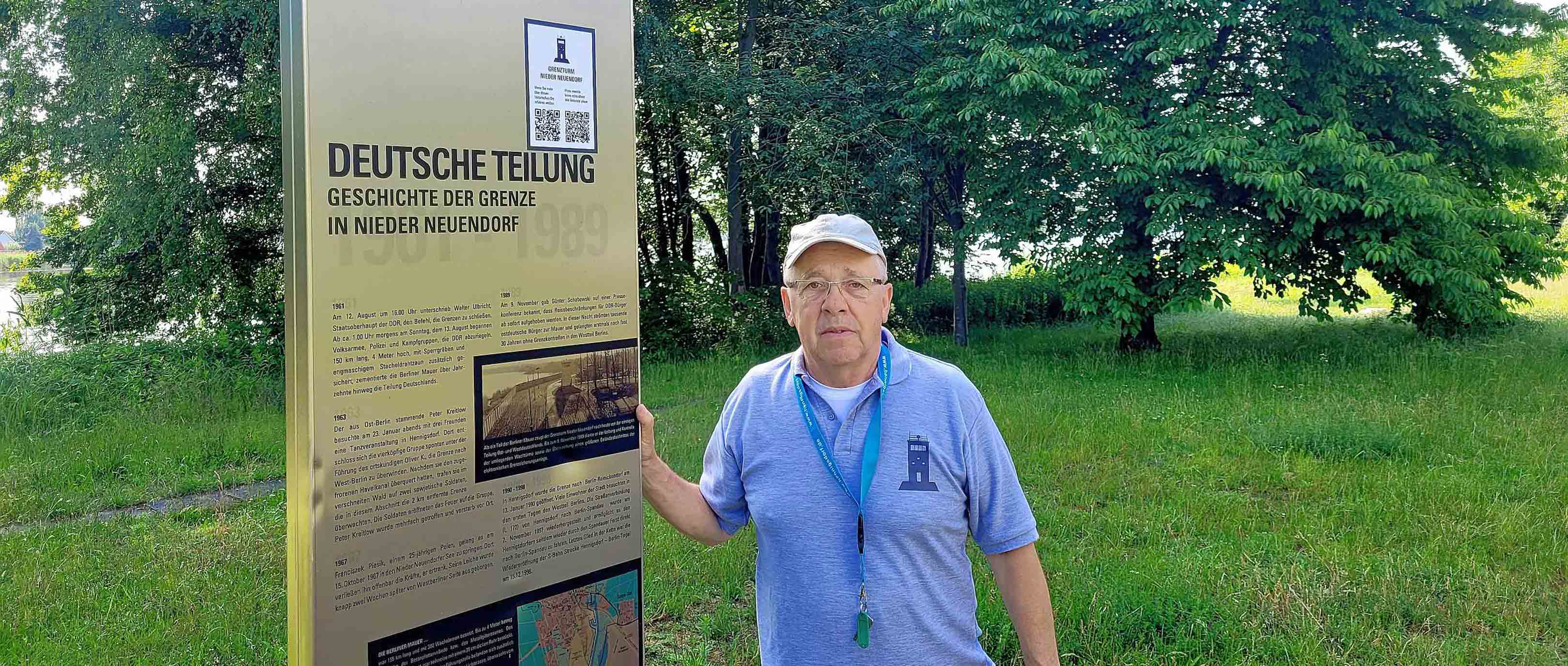A barrier which divided a country in two and which was 155km (96 miles) long and 4m tall might not be an obvious location to go searching for a gravel trail, but it is one that Timo Rokitta decided to go and ride recently. Completed in 2006, the trail primarily follows the route of a patrol road used by customs officers in West Berlin or GDR border guards in East Berlin. Timo took his trusty gravel bike along for the ride and sent in this great report.
The Berlin Wall Trail (Berliner Mauerweg) follows the course of the "Anti-Fascist Protection Rampart," as the deadly barrier was called in the GDR, a reminder of the time between 1961 and 1989 when the city of Berlin was divided. The approximately 160 km long trail is a great way to explore the capital and the Brandenburg countryside from an unusual perspective with a gravel bike.
I start my ride in Teltow at the eponymous canal. Here the route, with many roots, leads over a narrow singletrack to the former Drewitz / Dreilinden border crossing. Those who wanted to pass through here at that time had to expect very long waiting times and elaborate personal and vehicle checks. Those who survived this procedure were then allowed to continue. The transit route to West Germany was not to be left. The so-called "Swiss Houses" in Klein-Glienicke, which were built in the style of Swiss building tradition from 1863 on the orders of Carl von Preußen, are still known today. These charming wooden cottages are now even on the UNESCO World Heritage list!
After crossing the highway, a wide and smooth path leads through extensive forests. After Babelsberg, I reach the Glienicke Bridge. Several spectacular spy exchanges between East and West were conducted here during the Cold War. Today, traffic, including many cyclists, rolls over the bridge.
The further path runs along the water here. There are noteworthy villas and houses from the 19th century. On fine gravel, I ride around the Jungfernsee and Krampnitzsee. Another historic site near Potsdam is Cecilienhof Palace. Between 1913 and 1917, Kaiser Wilhelm II had this residence built. In August 1945, it was the venue for the signing of the agreement by the victorious powers after World War II, which sealed the division of Germany into four parts.
After traveling a few kilometers on lonely forest paths, I stand in front of the Heilandskirche in Sacrow. This church is a real eye-catcher in the Italian style of 1844, which stood directly in the border area of the GDR. The building fell into decay for decades, only to be restored after the reunification and declared a World Heritage site in 1992. The trail now turns sharply north. The area now becomes more rural, and one might think they are somewhere in the middle of northern Germany – pure nature!

In Nieder-Neuendorf, I stop at an old border tower. An elderly gentleman speaks to me and tells me some of the history of the tower and the border wall that once stood here. In Stolper Heide, the Berlin Wall Trail reaches its northern turning point and bends towards Lübars. One can hardly believe that this corner, with the atmosphere of a sleepy Brandenburg village and an old historic town center, is a part of Berlin. Cobblestone paths, trails, and bike paths now constantly alternate towards Berlin.
After 90 kilometers, I pass through the first districts of the capital Berlin. At Bornholmer Straße, where the border was first opened on November 9, 1989, the Berlin Wall Trail takes a bend towards the memorial at Bernauer Straße. Here stands the longest remaining piece of the original wall, including border barriers and a watchtower. After almost 100 kilometers, I reach the Spree and follow it to the government district. Due to the upcoming European Football Championship, barricades have already been set up here, and I have to deviate slightly from my route.
At Potsdamer Platz, I am right in the center of Berlin. Here, the course of the Berlin Wall is marked by a double row of cobblestones. I quickly reach the eastern part of the city afterwards.
Another legendary spot is the famous Checkpoint Charlie in the heart of Berlin. Here, memories are kept very much alive. At the section of the wall at the East Side Gallery, I quickly take a few souvenir photos before heading back to quieter surroundings. Otherwise, nothing here reminds us of the decades-long division of the city. Through Treptower Park, I now head to the Neukölln district. Cobblestone dominates the side streets here, and thoroughly shaken, I finally reach the Teltow Canal. The section of the Wall Trail that runs directly along the water feels like a highway for cyclists. Not entirely unjustified, as the path is a byproduct of the parallel city highway.
I now head out of Berlin to Schönefeld on the southern border. Here the gravel bike is in its element. Bumpy forest and field paths and extremely bumpy cobblestones take me through the peaceful district of Lichtenrade. Anyone riding a racing bike here will bitterly regret this cobblestone hell. A gravel bike is again the best choice for the Wall Trail here.
And then, after 160 kilometers, I am back in Teltow at the starting point of my tour. What a historic and varied gravel round it was! Not difficult to ride, but in hindsight, this route makes one thoughtful. The former GDR tried to keep its citizens in the country by any means necessary, often with violence - escape attempts usually ended in death.
The steles along the Berlin Wall Trail are very informative. They give a face to the victims of the Wall. They remind us of the fates of people who had had enough of the GDR system and dreamed of a better life in the West, often paying the highest price for it - their lives.
If you'd like to try Timo's route for yourself, you can find it here: